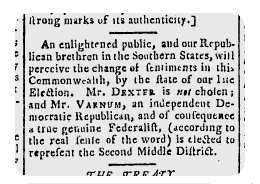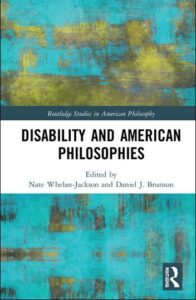Until the 1800s, culture was not a “count noun,” a noun that can take a plural form. It was a “mass noun,” which identified a quality that could come in degrees. In English, people did not speak of “cultures” but saw individuals as having more or less culture.
Europeans’ awareness of cultural diversity was generally superficial. For instance, they could not perceive their distance from ancient Greeks, Romans, and Israelites, whom they viewed basically as their contemporaries. They disdained non-Europeans because they wanted to exploit them, but their ethnocentrism also fit with their notion that culture referred to a single scale–and they had more culture than other people. A similar linguistic shift also affected the word “religion,” although it became a count noun somewhat before “culture” did.
Since ca. 1800, a new theory has been available and influential. Here are statements of this theory by quite diverse authors:
“Each nation has the center of happiness within itself, as every sphere has its center of gravity.” – Johann Gottfried Herder, “This, Too, a Philosophy of History,” from Herder On World History: An Anthology, edited by Hans Adler and Ernest A. Menze. Armonk, NY: M.E. Sharpe 1774, p. 40
“The constitution of a people, with its religion, with its art and philosophy, or at least with its ideas and thoughts, its education [Bildung] in general (not to mention other external powers, as well as the climate, the neighbors, the state of the world) forms one substance, one spirit [Geist].” – GWF Hegel, Vorlesungen über die Philosophie der Geschichte. Reclam publishing company 1924 (original 1837), p. 25; my trans. I owe the reference to Michael Rosen, The Shadow of God (Harvard 2022).
“Never did one neighbor understand another: his soul always wondered at his neighbor’s madness and evil. A table of values hangs over every people. Behold, it is a table of their overcomings; behold, it is a voice of their will to power.” – Friedrich Nietzsche, “Of the Thousand and One Goals,” from Thus Spoke Zarathustra, 1885. (my trans.)
“A language, with its expression and its evolution, is not the work of scattered units, but of an historical community: only he who has unconsciously grown up within the bond of this community, takes also any share in its creations. But the Jew has stood outside the pale of any such community, stood solitarily with his Jehovah in a splintered, soilless stock, to which all self-sprung evolution must stay denied, just as even the peculiar (Hebraic) language of that stock has been preserved for him merely as a thing defunct.” – Richard Wagner, Judaism in Music, (1850) trans. William Ashton Ellis
“By ‘tradition’ is not meant the dead weight of outlines, of superficial laws and customs–but an inward spirit, the genius of a people, a harmony with the most constant expressions of our country.” – Eugenio Montale, Stile e Tradizione (1925) p. 153 (my trans.)
“[Class struggle is] always specified by the historically concrete forms and circumstances in which it is exercised. It is specified by the forms of the superstructure (the State, the dominant ideology, religion, politically organised movements, and so on); specified by the internal and external historical situation which determines it on the one hand as a function of the national past (completed or ‘relapsed’ bourgeois revolution, feudal exploitation eliminated wholly, partially or not at all, local ‘customs’ specific national traditions, even the ‘etiquette’ of political struggles and behaviour, etc.), and on the other as functions of the existing world context …” Louis Althusser, “Notes for an Investigation,” Part III of “For Marx” (1962) trans. by Ben Brewster
“Human beings differ, their values differ, their understanding of the world differs; and some kind of historical or anthropological explanation of why such differences arise is possible, though their explanation may to some degree reflect the particular concepts and categories of the particular culture to which these students of the subject belong.” – Isaiah Berlin, letter to Beata Polanowska-Sygulska (Feb. 24, 1986), in The New York Review of Books, Sept. 23, 2004, p. 24
“A modern democratic society is characterized … by a plurality of reasonable but incompatible comprehensive doctrines.” “A reasonable doctrine is an exercise of theoretical reason: it covers the major religious, philosophical, and moral aspects of human life in a more or less consistent and coherent manner. It organizes and characterizes recognized values to that they are compatible with each other and express an intelligible view of the world.” – Rawls, Political Liberalism (Columbia, 1993), pp. xvi, 59
I have chosen quotations by thinkers–from the radical left to the radical right, plus two or three liberals–who share the assumption that there are many cultures in the world, and each culture is reasonably coherent and distinct. An individual belongs to a culture in a similar way as a citizen with a passport belongs to a nation-state.
This model of culture (which is, more broadly, a new account of thinking itself) first arose in response to a growing empirical awareness of ancient and foreign ways of life, plus a desire to protect local traditions against universalistic ideologies. These two reasons explain why the most important source of the new model was Germany in the Age of Revolution. Germans were particularly advanced in historical scholarship (ranging from classical philology to Germanic folklore to an early interest in Sanskrit), and they faced the tangible trauma of a French army with universalistic values.
The new (I would say, “modern”) model has advantages. It makes some sense of the actual diversity among humans and sometimes offers insights about specific ideas or works of art. It can inspire new works when creative people believe that they comprehend the inner spirit of their own people and try to communicate it. And it rationalizes struggles for independence and self-determination, which can be appealing, especially when the protagonists are oppressed.
The modern model also has major disadvantages. It implies that boundaries can be drawn between and among peoples, but any actual boundaries must leave minorities at the mercy of local majorities. It overlooks the heterogeneity of individual opinions, which has illiberal implications. It leads liberals like Berlin and Rawls to advocate a government that is neutral among the incompatible cultures within its boundaries, which is probably impossible and blocks worthy policies. It favors national self-determination not only for oppressed and marginalized groups but also for big and powerful populations. It leads to vexed and often unproductive discussions about who has a right to which cultural forms.
The modern model can generate a profound form of skepticism. If all our beliefs about what is true and good are phenomena of our culture, yet other people have other cultures, how can we be correct about anything? As Berlin suggests in the quotation above, how can we even know which other cultures exist, since our disciplines of history and anthropology must themselves reflect our own culture?
Fortunately, the modern model is false as a description of our human world. Culture is not something to which a person belongs. It is not a thing that has causal power. Culture is a large and usually quite heterogeneous set of ideas, beliefs, memories, skills, and values that a person has and can use.
There is a certain tendency to make the beliefs, values, and skills of a given population increasingly coherent. For instance, Catholic theology, baroque architecture, and monarchical government seem to cohere; as do Buddhist philosophy and Japanese aesthetics. People want their various beliefs to be consistent, and they want other people to agree with them. However, successful efforts to make beliefs and values cohere often require violent political force, because they counteract other tendencies that are also pervasive–tendencies to innovate, to borrow from afar, to distinguish oneself from others, and to complicate received ideas. All populations demonstrate some degree of heterogeneity and incoherence.
To be sure, we are all limited by culture. We have finite time and mental capacity to learn things. Besides, some people won’t allow other people to have access to what they know and can do. (For instance, they may deny access to schooling, restrict the curriculum in various ways, or censor certain ideas.) As a result, each of us only knows some things, and what we know helps to explain what we do. In that sense, culture is causal. Even the aspects of culture that we do use often fail to give us what we want, because nature or other people get in our way.
But we all have somewhat different culture. Indeed, the list of any individual’s ideas, beliefs, etc. is constantly changing. In that sense, culture should not actually be a count noun. There is no number of cultures on our planet. There are more than 7 billion people with constantly changing and circulating bodies of culture. People differ–sometimes profoundly–yet they resist classification. And that means that certain implications of the modern model, from relativist skepticism to hyper-nationalism–are wrong and not only bad.
See also: individuals in cultures: the concept of an idiodictuon; everyone unique, all connected; what is cultural appropriation?; and Putin’s cultural nationalism. (This post repeats many points I’ve made before; any added value lies in the list of quotations, which is new.)




